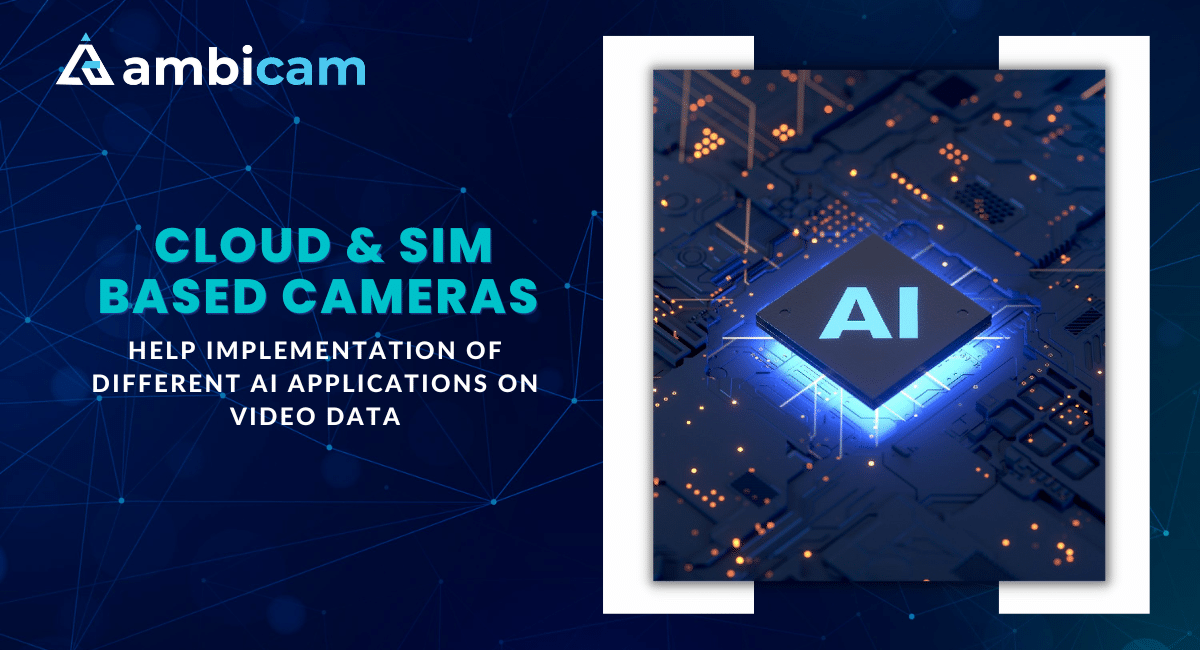Introduction
Artificial intelligence (AI) has become an increasingly popular tool for analyzing video data in various industries, including retail, transportation, and security. Cloud & SIM Based Cameras are two technologies that can help facilitate the implementation of different AI applications on video data. In this blog, we’ll discuss how cloud and SIM-based cameras can help implement different AI applications on video data.

1. Cloud-Based Cameras
Cloud-based cameras are cameras that store video data in the cloud, rather than on physical storage devices. This has several advantages when it comes to implementing AI applications on video data:
- Scalability: Cloud-based cameras can easily scale up or down, depending on the size of the video data being analyzed. This means that organizations can easily add or remove cameras as needed, without having to worry about the physical storage capacity.
- Real-Time Access: Cloud-based cameras enable real-time access to video data from any location, provided there is an internet connection. This means that organizations can monitor their premises in real-time and take immediate action if needed.
- Cost-Effective: Cloud-based cameras are often more cost-effective than traditional cameras, as they do not require expensive physical storage devices. This means that organizations can save money on hardware and maintenance costs.
- Improved Security: Cloud-based cameras are often more secure than traditional cameras, as video data is encrypted and stored in the cloud. This means that organizations can better protect their data against theft, damage, and other risks.
2. SIM-Based Cameras
SIM-based cameras are cameras that connect to the internet using cellular networks, rather than Wi-Fi or Ethernet. This has several advantages when it comes to implementing AI applications on video data:
- Remote Access: SIM-based cameras enable remote access to video data from any location with cellular network coverage. This means that organizations can monitor their premises even in areas where Wi-Fi or Ethernet connections are not available.
- Real-Time Access: SIM-based cameras also enable real-time access to video data, which means that organizations can monitor their premises in real-time and take immediate action if needed.
- Quick Deployment: SIM-based cameras can be quickly deployed in areas where traditional cameras are not feasible, such as remote areas with limited connectivity. This means that organizations can implement AI applications in these areas and benefit from the insights generated by the analysis of video data.
- Improved Reliability: SIM-based cameras are often more reliable than traditional cameras, as they are not affected by Wi-Fi or Ethernet connectivity issues. This means that organizations can have greater confidence in their surveillance systems and the data generated by them.
Conclusion
Cloud and SIM-based cameras offer several advantages when it comes to implementing different AI applications on video data. They enable real-time access to video data from any location, enable quick deployment in remote areas, and provide improved security and reliability. By leveraging these technologies, organizations can generate valuable insights from their video data, improve their operations, and enhance their overall security posture.
